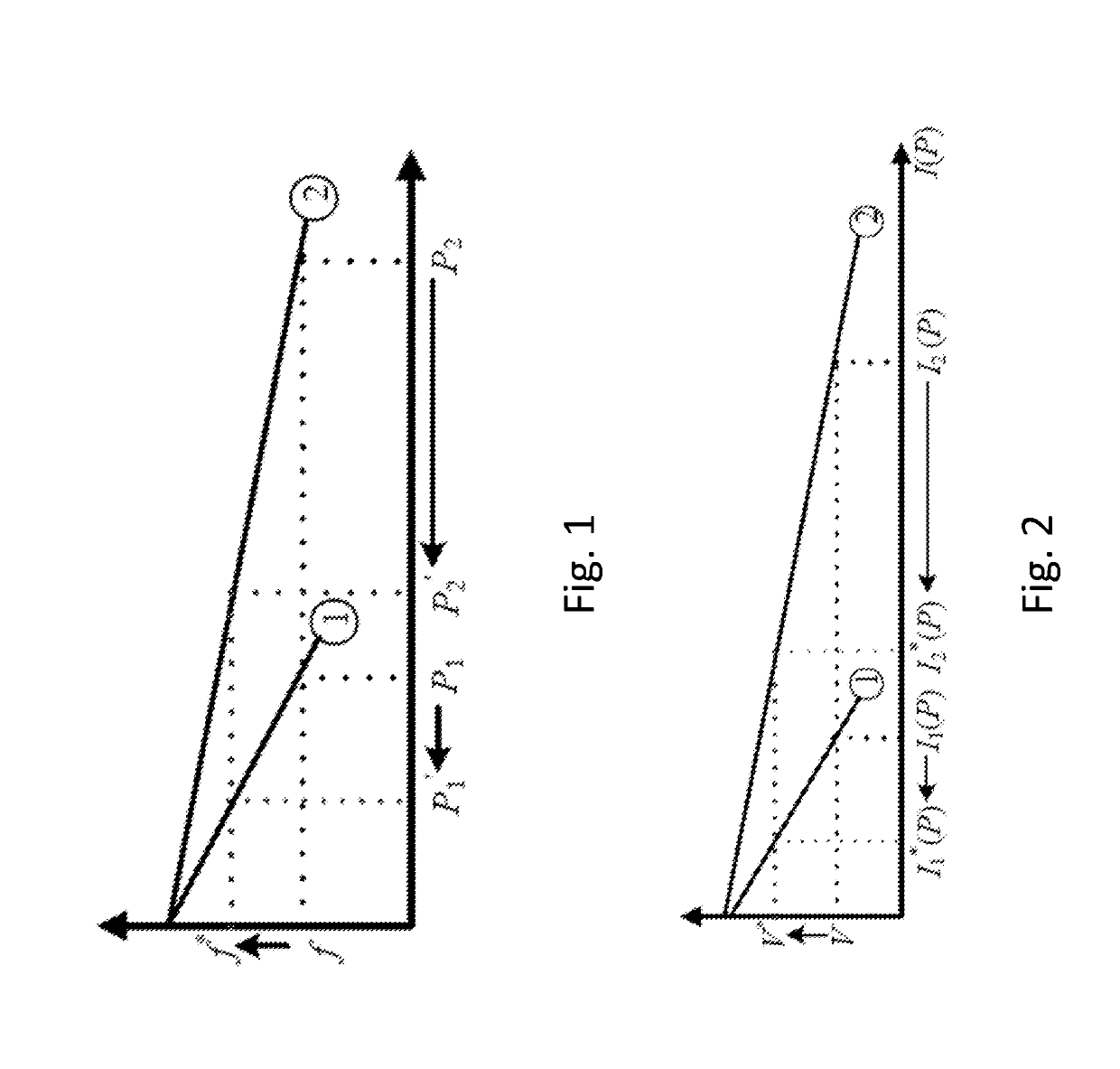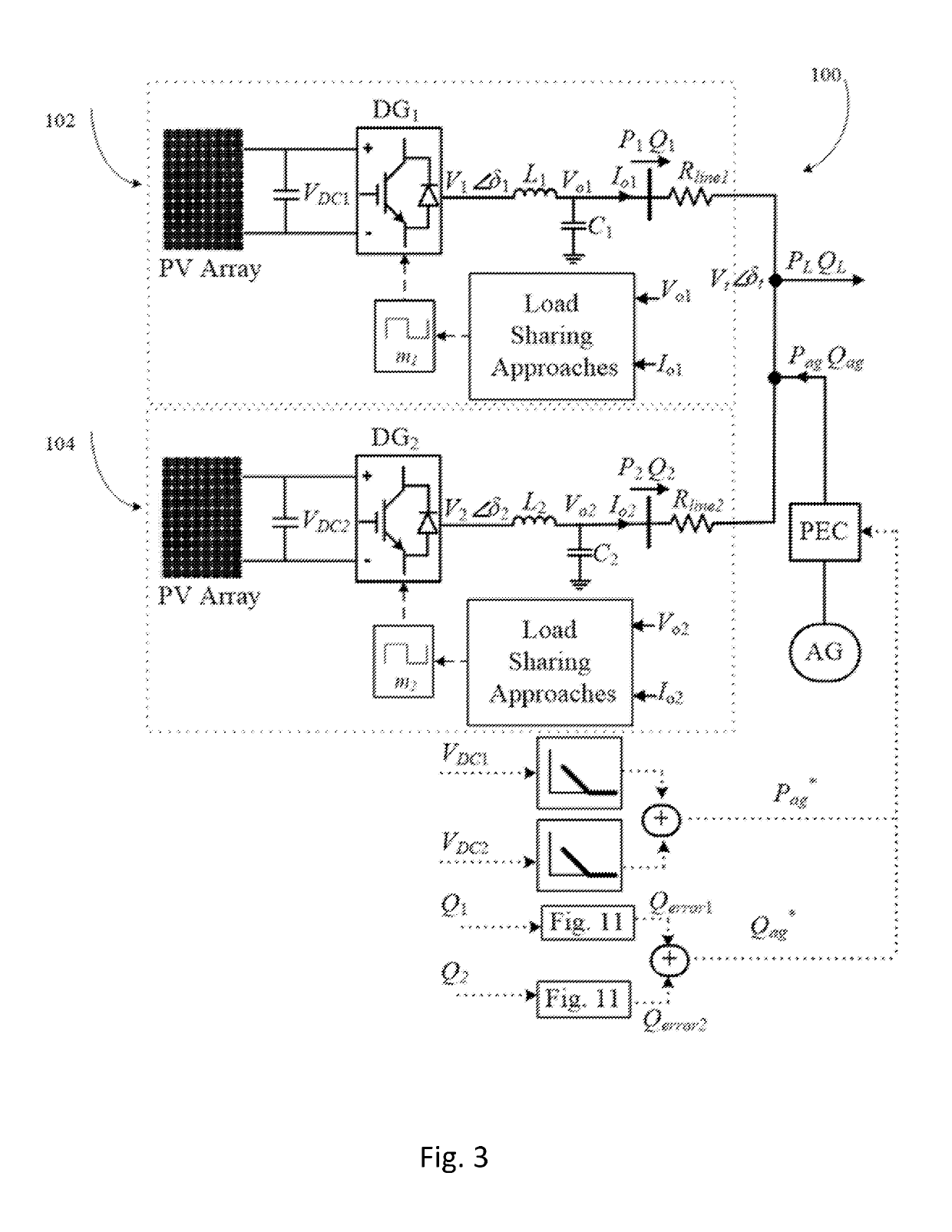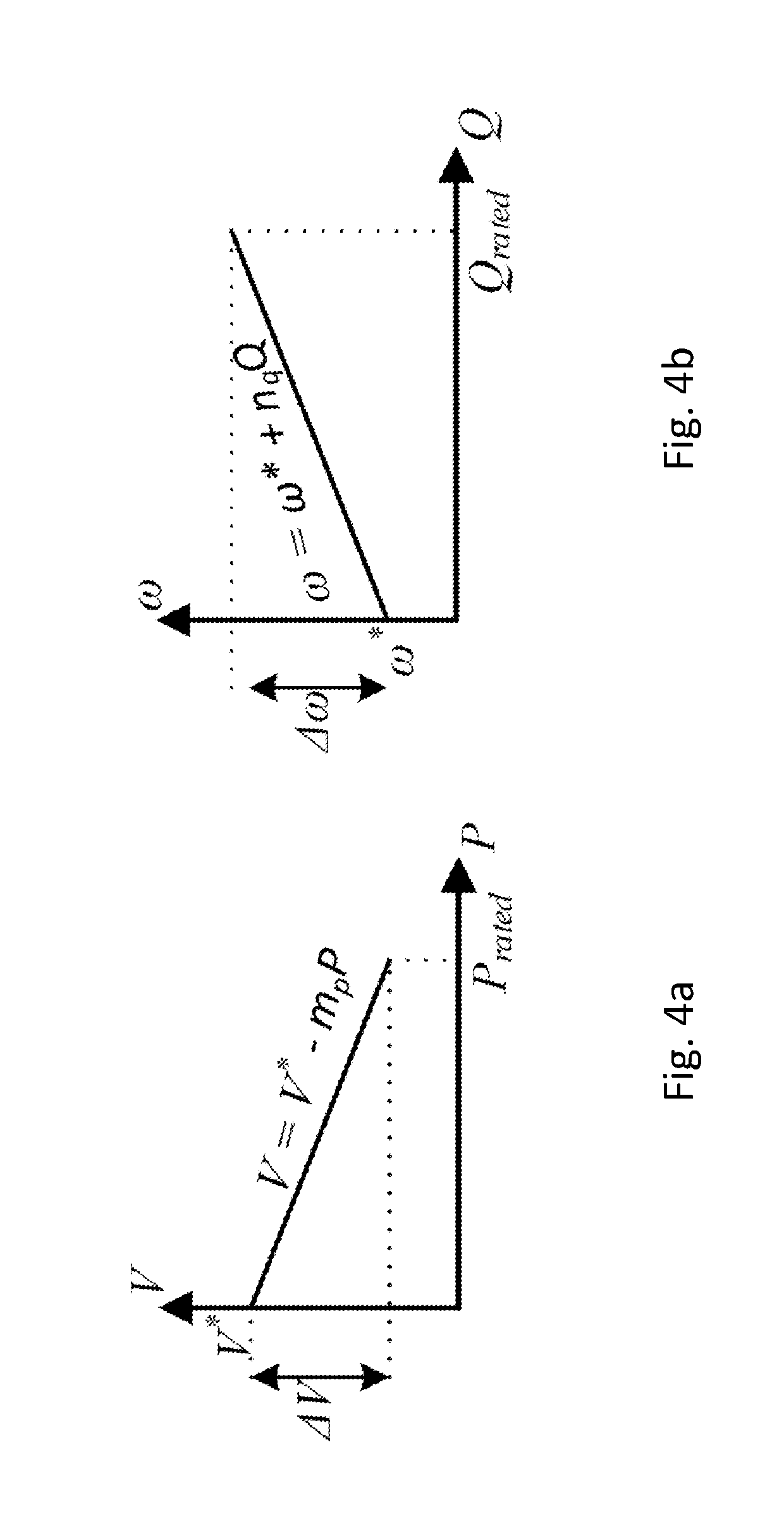Dynamic active and reactive power load sharing in an islanded microgrid
a micro-grid and active power technology, applied in the field of dynamic active and reactive power load sharing in an islanded micro-grid, can solve the problems of failure of inverter-based sources, less capacity available for reactive power contribution, and inapplicability
- Summary
- Abstract
- Description
- Claims
- Application Information
AI Technical Summary
Benefits of technology
Problems solved by technology
Method used
Image
Examples
Embodiment Construction
[0034]The aim of the present invention is to make active and reactive power sharing sensitive to solar irradiation (without the need for measuring it), such that in an MG having a plurality of DGs, when power generation of one unit drops (for example due to a reduction in solar irradiation):[0035]A. The other units do not drop their generation;[0036]B. The other units increase their generation, provided that enough irradiation is available; and,[0037]C. The units that generate less active power contribute more in reactive power, and vice versa.
[0038]According to a first aspect of the present invention there is provided a method of managing a microgrid comprising the steps of:[0039]providing a microgrid comprising a plurality of renewable distributed generators, each renewable distributed generator having a respective inverter;[0040]determining a variable related to the available power from each of a plurality of renewable distributed generators;[0041]adjusting gains of each respecti...
PUM
 Login to View More
Login to View More Abstract
Description
Claims
Application Information
 Login to View More
Login to View More - R&D
- Intellectual Property
- Life Sciences
- Materials
- Tech Scout
- Unparalleled Data Quality
- Higher Quality Content
- 60% Fewer Hallucinations
Browse by: Latest US Patents, China's latest patents, Technical Efficacy Thesaurus, Application Domain, Technology Topic, Popular Technical Reports.
© 2025 PatSnap. All rights reserved.Legal|Privacy policy|Modern Slavery Act Transparency Statement|Sitemap|About US| Contact US: help@patsnap.com



